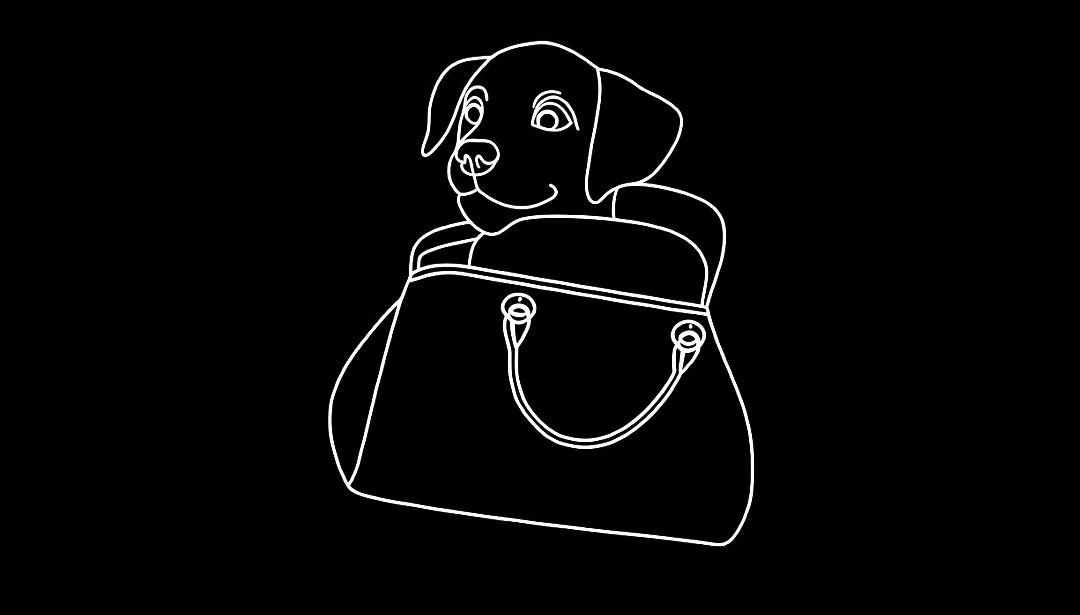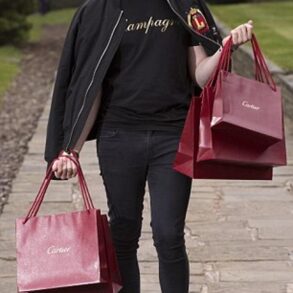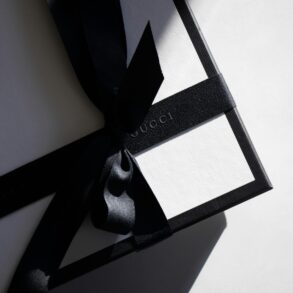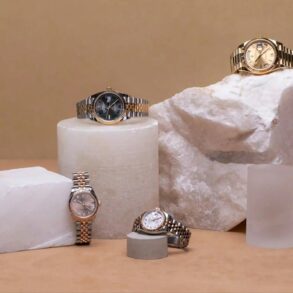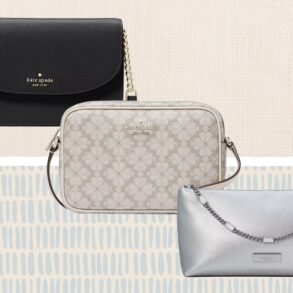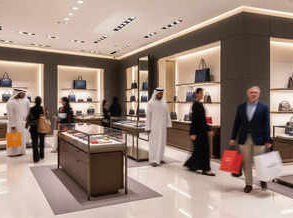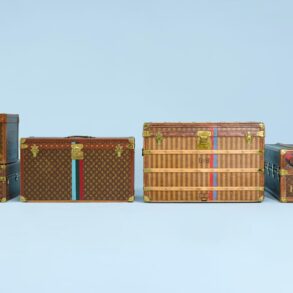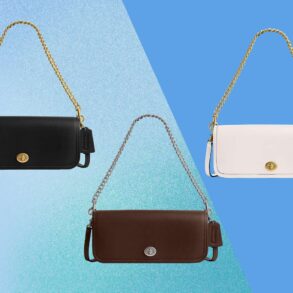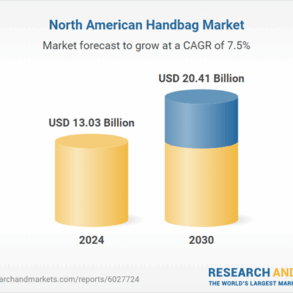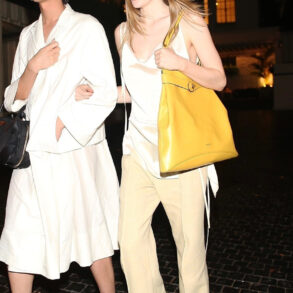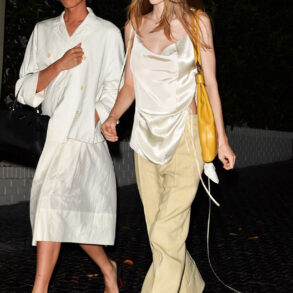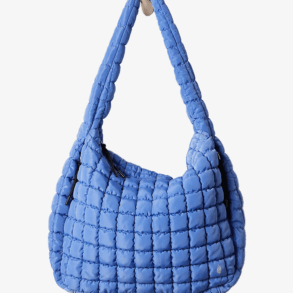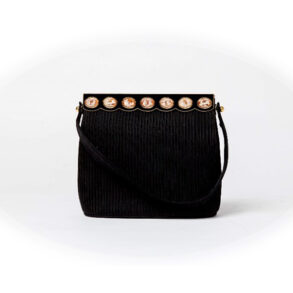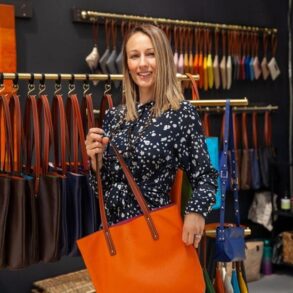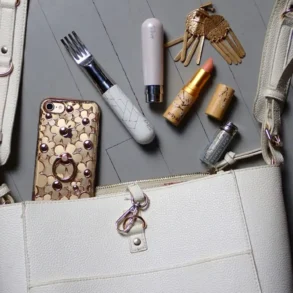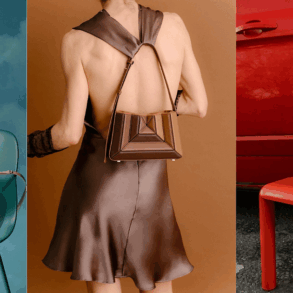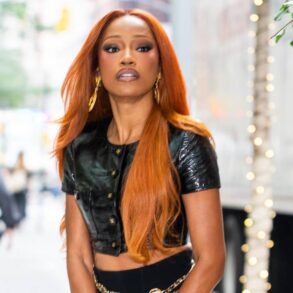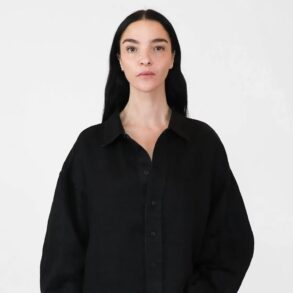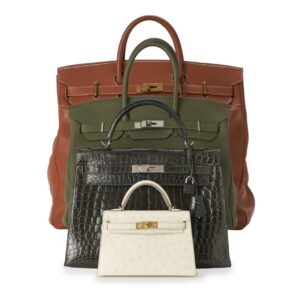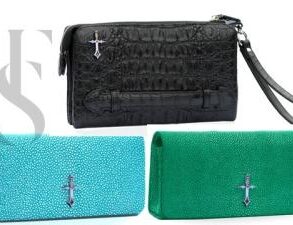It hardly looks like luxury – but, really, that’s the point. Under harsh strip lighting in a factory in Guangzhou, China, a cheery man holds up what very much looks like a grey leather Hermes Birkin handbag while, in the background, workers appear to assemble more of the same. He breaks down the cost of the product he’s holding: $450 on “togo leather” from one of three top leather suppliers worldwide, sewing thread by Fil Au Chinois, a heritage French brand known as the “Rolls-Royce” of cotton spools. For the hardware, edge oil, lining and zipper, it’s a similar story – only the best, of course.
“Same quality, same material,” the man speaking to the camera says, patting the fake Birkin beside him. The total cost of it, including human resources? Around $1400 – or $36,600 cheaper than buying from Hermes directly, no invitation necessary.
“Some say as long as there’s a tag saying ‘Made in China’, a bag can never be luxury. However, in fact, more than 80 per cent of the luxury bags in the world are made in China,” he boldly claims in another video. “But those luxury brands won’t acknowledge that.”
The point, say the Chinese factory owners, is to publicly object to punitive tariffs imposed by US president Donald Trump, by encouraging consumers to buy cheap luxury goods directly from China, and cut out the middleman’s price hike.
They claim to be exposing “the truth” – one that is categorically denied by luxury brands like Hermes – about the production of luxury goods and, as a byproduct, are overwhelming a wealthy industry in a load of bad publicity. Welcome to the so-called TikTok trade wars, where handbags could be well and truly out – just not for the reason you might think.
One thing’s for certain: feathers are being ruffled on both sides of the battlefield. Some commentators are calling Chinese factory owners’ response “a big F YOU” to Western capitalism. Others say it’s just evidence of how the fashion industry is being forced to change; big brands like Prada, Chanel, Louis Vuitton and the rest of the LVMH group vehemently deny their products are made in China.
Some experts tell The Independent that it’s merely a concerted effort by counterfeit or “dupe” manufacturers to capitalise on Trump’s announcements. Considering that the factory owner’s claims that more than 80 per cent of luxury bags are made in China were thoroughly debunked by France24 and other outlets, it’s the latter that seems most credible.
That’s not to say that it doesn’t matter – far from it, says Amy Francombe, a contributing editor to Vogue Business. It’s just that the interesting part isn’t whether or not a few more people start buying dupes directly from China. The really intriguing bit is how a stunt like this got so enormously big.
“I think there are various factors contributing to just how viral this is going,” Francombe says. “For a while, there’s been a real disconnect between what the luxury brands market as luxury, and what luxury really is.”
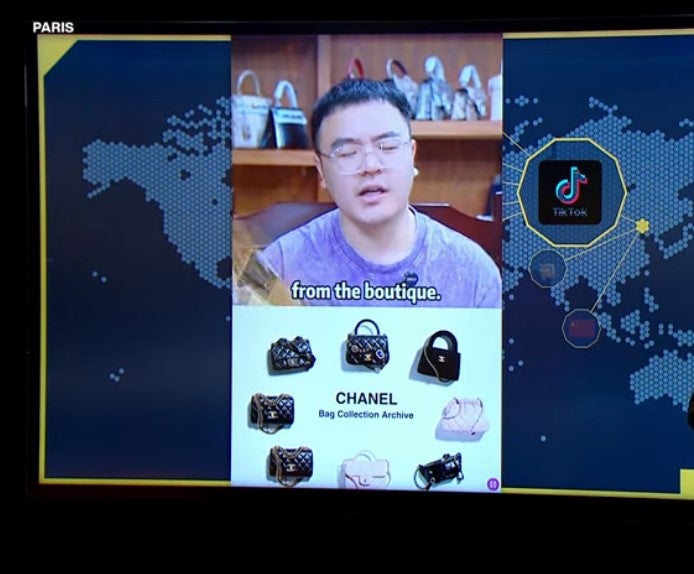
In the last year, as she points out, several high-profile cases in which major labels were placed under the spotlight. In July 2024, Italy’s competition watchdog announced it was investigating Dior and Armani over whether they misled customers following inquiries by prosecutors into “sweatshop” conditions at suppliers.
As a result, Dior condemned the alleged practices and cut ties with two suppliers in Italy; both brands fully cooperated with authorities. A Bloomberg investigation also found that luxury brand Loro Piana was selling a $9,000 jumper with parts of the supply chain not even getting paid. Scandals like these have left the public questioning the quality of high-end brands over and again, says Francombe.
Amid the misinformation being purported by Chinese factory owners last week, Francombe insists that the reason they’re able to get so much traction – and convince so many people that what they’re saying is true, despite the consistent denial from luxury brand houses, “is because of all that has preceded this moment”.
“I think that people are so ready not to be trustful of what’s happening,” she adds. “And there are factories and businesses waiting to play on that negative consumer sentiment.”
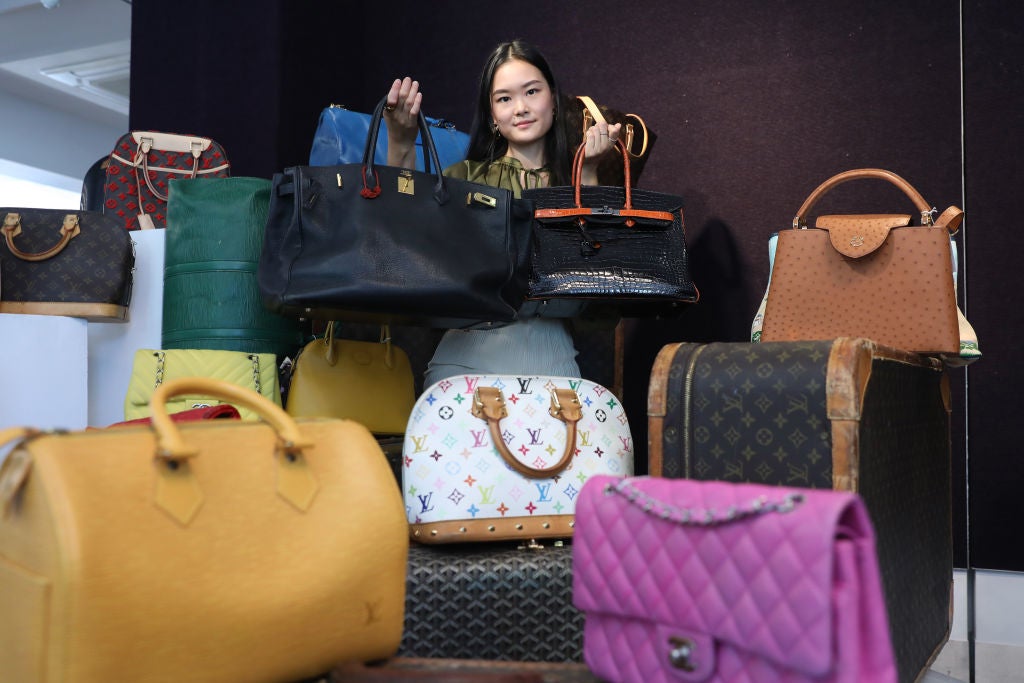
Still, we’re at a point of reckoning when it comes to high-end and luxury goods – and this latest viral moment shows all too well why it’s necessary. Among many other points raised, over the last week the debate has only underlined deeply ingrained prejudices over “made in China” labels which, historically, have been unfairly classified as cheap, plastic and poorly made.
Another factor put under the spotlight last week is the lack of transparency in manufacturing, which, by its nature, keeps consumers in the dark.
“It’s another reason I’m certain that a lot of these factories that came out last week aren’t being truthful, because there are so many deep relationships with manufacturers and a lot of NDAs that get signed – it’s highly unlikely that they would be breaking them,” Francombe explains.
Whether they’re true or not, some reports suggest that the wider impact from the US – and the more existential threat posed here by Chinese factories – is having some effect. According to Bloomberg, Hermes’ quarterly sales are down, due to “weaker Chinese luxury demand”.
It was also reported that LVMH shares plunged 7.8 per cent earlier in the week, losing its position as the largest luxury firm and setting it on course for the “worst session since March 2020”. In January this year, Hermes raised the price of its 30cm Birkin in Togo leather by 6.4 per cent, to $13,300.
In such an increasingly economically unstable global market, it’s no wonder that luxury goods like designer bags no longer hold the prestige that they once did. Consumers are increasingly prioritising design and functionality over brand names, shifting purchasing behaviour away from high-end labels.

And, let’s not forget, that labels financially thrive on social aspiration – what you buy and proudly wear is and has always been, to some extent, a point of rank and a statement of wealth; when it comes to logos, 1980s counterfeit culture set a precedent for streetwear that’s hardly dwindled since. But when upward mobility is taken off the table, what happens to the products we once bought to demonstrate it?
For a while, says Francombe, “luxury was just growing and cannibalising at such an intense rate – and it was just growth for growth’s sake. It was unsustainable,” she says, likening the turnover rate of high-end goods to the much maligned fast fashion industry at the other end of the scale. Prices were going up, but quality wasn’t following suit.
Now there’s been a telling shift in spending and consuming behaviours, she says. “It’s true that usually, you might buy these items not because you care about the quality, but because you care about what the rest of the world thinks when you have that bag on your shoulder.

“There was a big conversation about luxury markups last year, and across social media and in a lot of these Reddit forums, they were talking about how disappointing it is to see and how stupid it now looks when people wear a bag that costs £2000, when everyone else knows how much it really costs to make.
“Where, before, it might have signalled, ‘I have loads of money’, now it might signal that you’re irresponsible with how you spend your money. As a result, dupes are getting better and more popular, and the number of people who buy them and, even two years ago, would have been ashamed to admit to doing so has gone up so much – except now they’re openly doing it.”
The proliferation of “dupes” has led to a devaluation of brand prestige – a real threat to luxury brands who rely on their heritage and appreciation of their craftsmanship to justify their extreme pricing. Buying fake – even if it is made of the same materials and hardware as a Hermes bag – will never be buying a Hermes bag.
As revered menswear writer and expert Derek Guy points out on X, there are several significant details in the process – such as Hermes ’ use of the saddlestitch, a time-consuming, handwoven stitch that can’t be imitated by machine – that differentiate the dupes. Plus, the brand itself, which extends far beyond its products, is what makes a few bits of expensive fabric valuable or, more to the point, sellable.
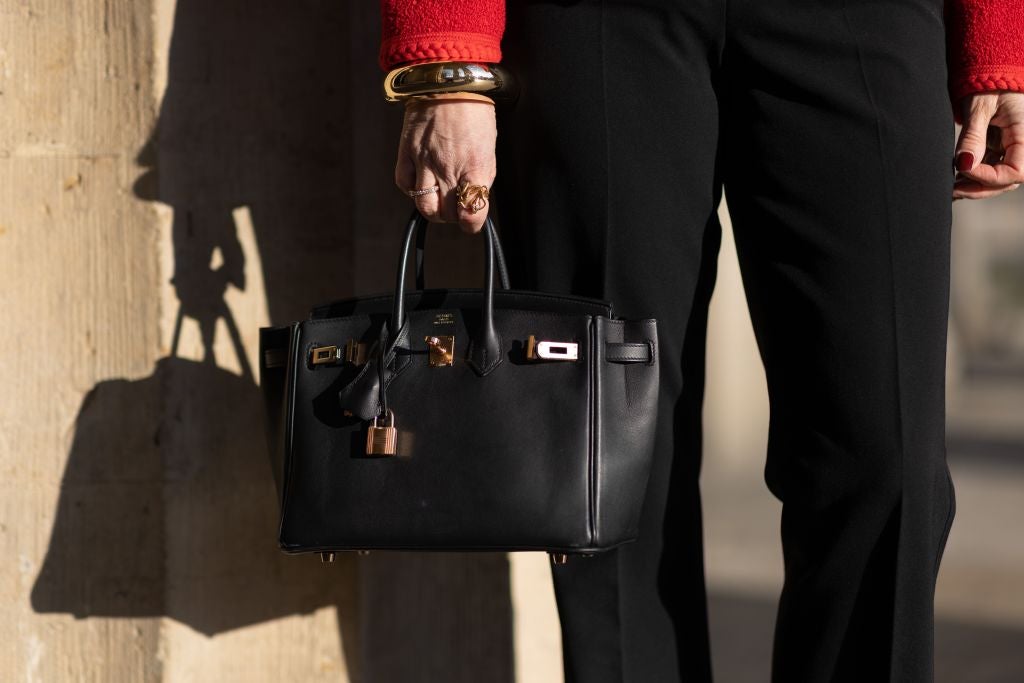
The Chinese factory markets might have gained a few more customers this week – at least if TikTok and the number of users saying they are placing their orders is anything to go by. But, regardless of what impact that might have on direct sales – or the relationship between two world superpowers – the bigger conversation on what makes luxury luxury, what we value and why has only just begun. In fact, Trump’s tariffs globally, should they go through, could dismantle the fashion industry as we know it, warns Francombe.
“Because he keeps extending the deadline of the tariffs – much like he’s doing with TikTok itself – makes me think that this is just a wider political play, a strategy to get other things across the line. I hope it is. If it were to actually happen to this industry, it would be beyond crippling.
“The whole ‘Made in USA’ just won’t work – the drama around the Louis Vuitton factory in Texas [the factory is Louis Vuitton’s worst-performing globally, with a whole host of problems, Reuters reported earlier this month] proves that,” she adds. “It’s untenable. I want to believe that it’s a power play and negotiation tactic because honestly, I don’t understand how the fashion industry could survive in a tariff world.”
Whatever happens next in the TikTok trade war remains to be seen – but in the meantime, it’s already underscored the complexity of modern world trade. For luxury fashion brands, it’s a time for reckoning: not only with world superpowers, but how to satisfy an increasingly uninterested customer from a diminishing market. What does luxury really mean right now? It’s up for global debate.
This post was originally published on this site be sure to check out more of their content.
